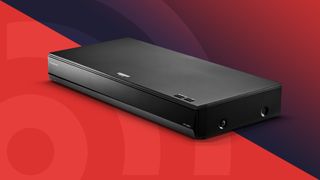Sony
Latest about Sony

This Sony camera is smashing it and I'm not surprised – it’s ranked no.1 in multiple best-selling lists and now our top camera buying guides
By Sam Kieldsen published
Sony's latest full-frame mirrorless is selling like hotcakes around the world, and has become TechRadar's own top pick in two major buying guide categories.

The PlayStation Portal was my gaming savior over an extended holiday break — but this one flaw still grinds my thumbsticks
By Rob Dwiar published
I have always enjoyed the PlayStation Portal and sung its praises as often as I can, but its slow-charging battery is a real drawback and became apparent when relying on the device over the holidays.

Hyperpop PS5 controller and console cover pre-orders are live and readily available
By Rob Dwiar last updated
We've got all the best information and links for Sony's latest addition to its suite of PS5 controllers and console covers: the Hyperopop Collection.

Netflix and Sony sign a big global movie deal – including these 5 films
By David Nield published
Sony films will be available on Netflix first after their theatrical run, all around the world.

Sony FE 100mm f/2.8 Macro GM OSS review: a flawless, premium lens for macro fans
By Dan Mold published
The Sony FE 100mm f/2.8 Macro GM OSS is the update to its 10-year-old predecessor, and it's the lens Sony macro lovers have been dreaming of.

Sony teases launch of 'a new form of listening' – here's what we think it is
By David Nield published
Sony is teasing a new product launch for next week, and tipsters are predicting that it's for the Sony LinkBuds Clip.

The best 4K Blu-ray players: Ultra HD marvels chosen by our experts
By James Davidson last updated
Streaming services are popular, but there's no better way to watch movies than with the best 4K Blu-ray players.

These PSVR 2 demos and game trials are must-plays if you recently picked up Sony's latest VR headset
By Jake Green published
PSVR 2 free demos are mostly offered via PS Plus Premium, though they're well worth checking out. Here's five game trials and demos to get you started.
Sign up for breaking news, reviews, opinion, top tech deals, and more.

